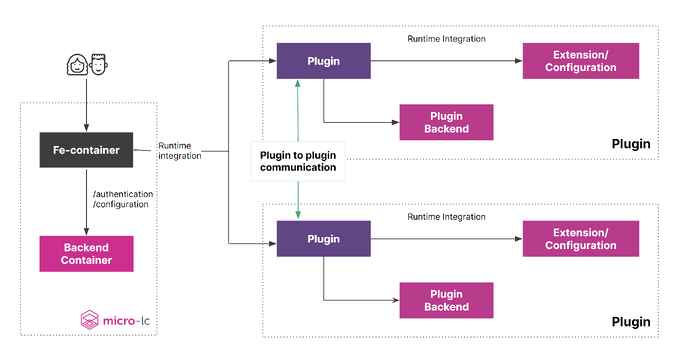Micro-frontends are very powerful, but you need to orchestrate them to provide a consistent experience. This is exactly the reason why we at Mia-Platform developed micro-lc and released it as open-source.
If you are not familiar with it, in a nutshell, micro-lc is an open-source micro-frontends orchestrator: you can find further information in the documentation introduction, or you can read this blog post to get a more discursive overview.
We are proud to announce micro-lc v2.0! A lot of new features have been implemented and optimized, making the tool more powerful than ever. Micro-frontends keep evolving, and so does micro-lc.
Let's take a closer look to what has changed.
A new live playground
One of the main news is the new playground available on the website. Here you can try micro-lc live, without the need to install anything: in the box on the right you will directly see the result. You are free to do all the experiments you like and test the full potential of micro-lc.
What are you waiting for? Unleash your creativity!
micro-lc has never been lighter
If you are familiar with micro-lc and you have already used it, you will love this new feature. If you are a new user, you will love it too, don't worry.
micro-lc can now be used through a CDN: this means that the download will be much lighter and the interface will be easier. This because micro-lc and microlc-element-composer (which used to be a separated core plugin) are now tightened together.
The bundle size is very low and so pages load faster, ensuring higher performances to your micro-frontends.
In addition, the code that makes micro-lc run is available as a standalone library that you can download via npm. Just run the following command:
npm i @micro-lc/orchestrator
New YAML integration
Besides the already supported JSON, we introduced the possibility to write configuration in YAML. Since YAML syntax is far more easily understandable for humans, this feature will boost you building your micro-frontends.
But, if you are a JSON lover, you can continue to use it as you have been doing until now. You can also use the converter available in the Playground section to easily convert your YAML to JSON, and viceversa.
... and a lot of other cool stuff
Besides all the above, other new features and improvements have been added:
- New communication method between applications;
- micro-lc now supports centralized states from plugin;
- micro-lc is embeddable everywhere, so you can use it without downloading it;
- You can have custom layouts by default.
- The documentation has been updated and fully restyled!
That's it for now, but we will keep updating and improving micro-lc.
If you want to contribute to the project, take a look at the open issues, and feel free to open a new one if you don't find what you are looking for.
Moreover, the blog section has been introduced on the website, so consider writing a post for sharing your experience building awesome micro-frontends!


